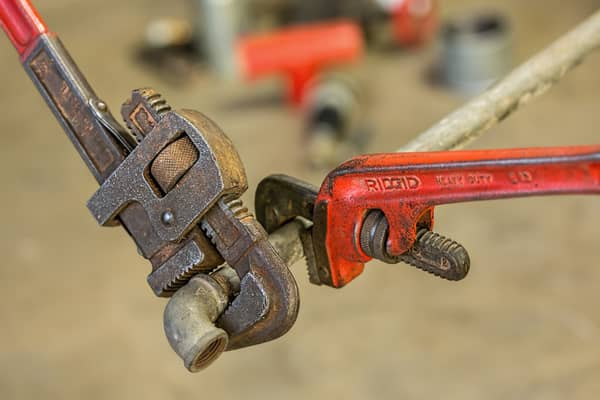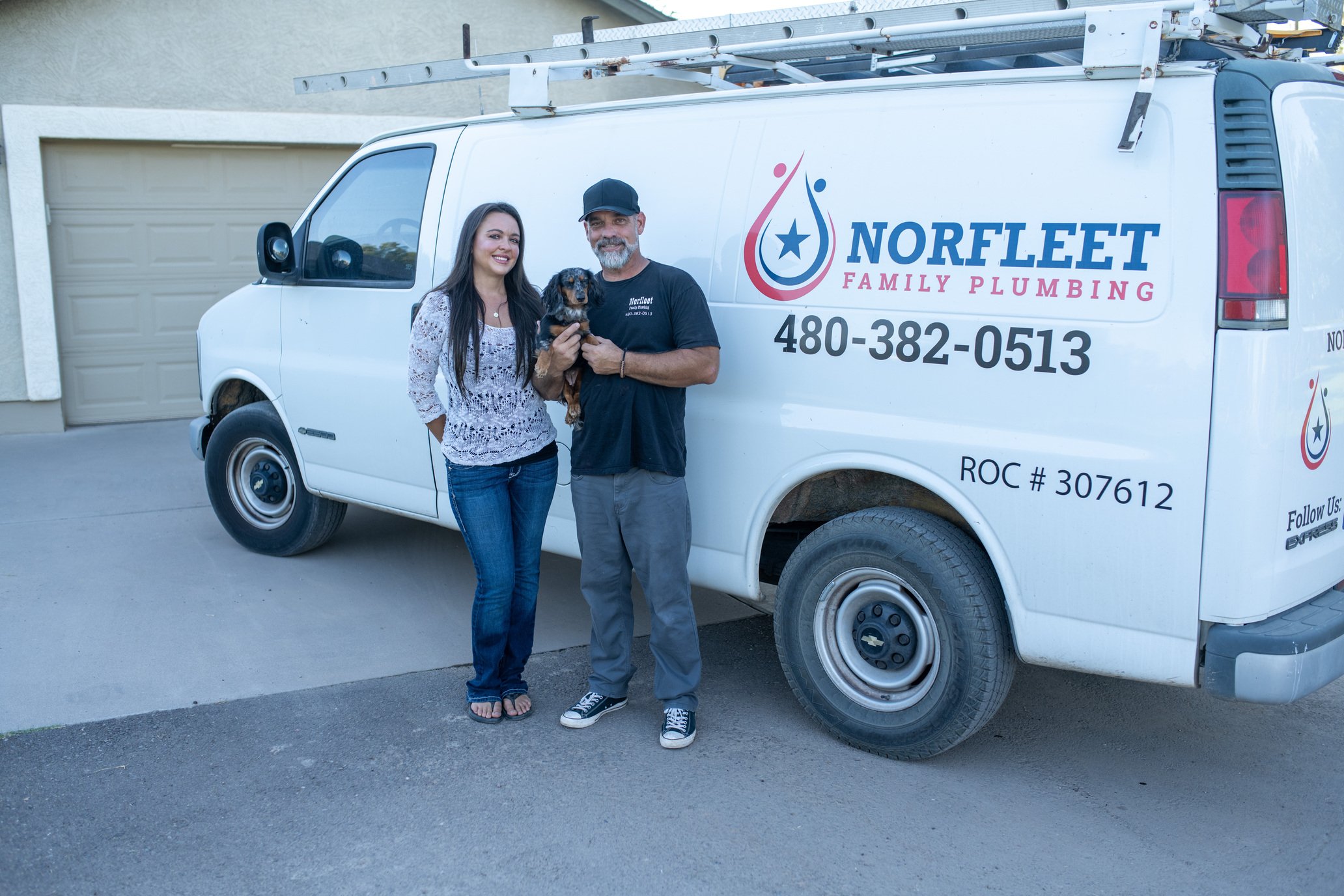Untangling the Fundamentals of Home Plumbing: A Beginner's Manual
Untangling the Fundamentals of Home Plumbing: A Beginner's Manual
Blog Article
Each person seems to have their unique thinking about Plumbing Basics Every Homeowner Should Know.

Plumbing is a vital aspect of any home, responsible for providing clean water for alcohol consumption, cooking, and showering, along with removing wastewater safely. Recognizing the essentials of home plumbing is essential for every homeowner to ensure correct maintenance, troubleshooting, and, if necessary, fixings. In this beginner's overview, we'll cover the essential principles of home plumbing to aid you become extra accustomed to exactly how it works.
Water System
The water supply system brings clean water into your home from a local water source or a personal well. It includes a primary water line that links to your home's plumbing system, generally situated underground. A water meter determines the amount of water consumed, while a shut-off valve permits you to control the circulation of water right into your home.
Plumbing Fixtures
Plumbing fixtures are tools that provide water to numerous parts of your home and consist of sinks, faucets, toilets, showers, bath tubs, and home appliances such as dishwashing machines and cleaning devices. Each fixture is attached to the water system by means of pipelines and installations and might have its shut-off valve for upkeep or emergency situations.
Water Heating Unit
The water heating system is accountable for heating water for residential use, including showering, cooking, and cleansing. Typical types of hot water heater consist of tank-type water heaters, tankless (on-demand) hot water heater, and heat pump hot water heater. The water heater is attached to the water system system and delivers warm water to plumbing fixtures as required.
Drainage System
The drain system removes wastewater from your home and brings it away to a sewage treatment center or septic system. It includes a network of pipes, installations, and components that transfer wastewater from plumbing components to the main sewer line or sewage-disposal tank. Correct water drainage is vital to stop clogs, back-ups, and sewage leaks.
Air flow System
The air flow system aids keep correct air pressure and stop sewer gases from entering your home. Vent pipes, additionally called air vent stacks, extend from plumbing fixtures to the roof covering, permitting sewer gases to get away securely outside. Ventilation pipes likewise allow air to enter the drain system, assisting in smooth wastewater circulation and protecting against suction or vacuum results.
Common Plumbing Devices
Having the right devices handy is vital for performing basic plumbing fixings and maintenance tasks. Common plumbing tools include adjustable wrenches, pipe wrenches, pliers, pipeline cutters, hacksaws, bettors, augers (or drain snakes), and Teflon tape. Having these tools easily available can assist you deal with minor plumbing issues efficiently.
Basic Plumbing Repair Work
While some plumbing repair services might need expert support, many common problems can be addressed with basic DIY methods. Understanding exactly how to repair a leaking faucet, unblock a drainpipe, replace a bathroom flapper, or repair a trickling showerhead can conserve you money and time on plumbing repair services.
Final thought
Comprehending the basics of home plumbing is important for every property owner to keep a secure, practical, and efficient plumbing system. By acquainting on your own with the water system system, plumbing fixtures, drainage system, air flow system, typical plumbing tools, and basic repair work, you can confidently address minor plumbing issues and ensure your home's plumbing system runs smoothly.
Plumbing for Beginners: A Comprehensive Guide
If you’re a beginner when it comes to plumbing, don’t worry; you’re not alone. Plumbing may seem intimidating, but with the right knowledge and a little practice, you can handle many common plumbing issues on your own. In this comprehensive guide, we will demystify the world of plumbing for beginners, providing you with the basic knowledge and skills needed to tackle common plumbing problems and even take on some DIY plumbing projects.
The Importance of Basic Plumbing Knowledge for Beginners:
First and foremost, basic plumbing knowledge gives you a solid foundation. It helps you grasp the key concepts and terminology that are essential in this field. By learning the basics, you’ll be able to build upon that knowledge and tackle more complex plumbing tasks in the future.
Having a basic understanding of plumbing also enables you to handle common issues that may arise in your home. Picture this: a leaky faucet or a clogged drain. With some basic plumbing knowledge, you’ll have the confidence to troubleshoot and fix these problems on your own. It saves you from unnecessary expenses and the hassle of waiting for a professional to arrive.
As a beginner, learning the basics of plumbing empowers you to take care of your own home. It gives you a sense of independence and self-reliance. You’ll no longer have to rely solely on professionals for every small issue that pops up. Instead, you can handle many tasks yourself, saving time and money in the process.
Remember, everyone starts as a beginner. Embrace the learning process and take small steps to expand your plumbing knowledge. There are plenty of online resources, tutorials, and even local workshops that talk about plumbing for beginners.
Essential Tools for Plumbing for Beginners
As you start your plumbing journey, having the right tools in your toolbox is crucial. Let’s explore some of the must-have tools:
Adjustable Wrench:
This versatile tool is a staple in any plumber’s toolbox. It allows you to tighten or loosen nuts and bolts of various sizes. Make sure to have an adjustable wrench with a comfortable grip.
Pipe Wrench:
A pipe wrench is specifically designed for gripping and turning pipes. It has serrated jaws that provide a strong grip, making it easier to loosen or tighten threaded pipes and fittings.
Plunger:
The plunger is a simple yet effective tool for clearing clogged drains and toilets. It creates suction when you push and pull, helping to dislodge blockages. Keep a good-quality plunger handy for those unexpected clogs.
Pipe Cutter:
When it comes to cutting pipes, a pipe cutter is your go-to tool. It creates clean, precise cuts without damaging the pipe. Look for a pipe cutter that can handle the pipe sizes you’re working with.
Hacksaw:
A hacksaw is useful for cutting through pipes, screws, and other materials. It’s a versatile tool that can handle different cutting tasks. Remember to use a blade suitable for cutting metal.
Tape Measure:
Accurate measurements are crucial in plumbing. A tape measure allows you to measure pipe lengths, distances, and dimensions accurately. Opt for a sturdy tape measure that extends a good length.
Pliers:
Pliers come in handy for various tasks, such as gripping, bending, and cutting. Slip-joint pliers with adjustable jaws are great for gripping pipes, nuts, and bolts.

I was made aware of that editorial on Understanding the Basics of Your Home's Plumbing System from a good friend on a different web property. Sharing is good. You just don't know, you may very well be helping someone out. Thank-you for your time spent reading it.
More Details Report this page